




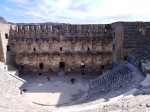














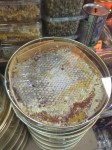










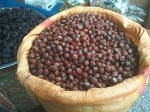

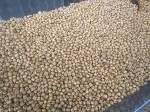
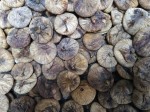







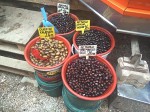








Are you curios what Ancient people ate? How did their diet look like? Was it full of meat? Grains? Fruits and vegetables? Or maybe full of heavy meals finished with sweets and wine? If you want to find out more about it, read the article about Ancient Romans’ and Greeks’ influences on the Turkish diet and their input to the Turkish cuisine.
It is worth mentioning that There is a lot of archeological sites in Turkey. And what is important, a lot of them is on the UNESCO list. So, visit some of them just to have a rough idea of how the life looked like ages before. These Ancient cities are mainly either Roman or Greek heritages that played an important role in those times.
While for example Perge, Pergamon or Ephesus are Ancient Greek cities, Pamukkale is strictly Roman and Aspendos is partially Greek and Roman.

Perge Archeological Site
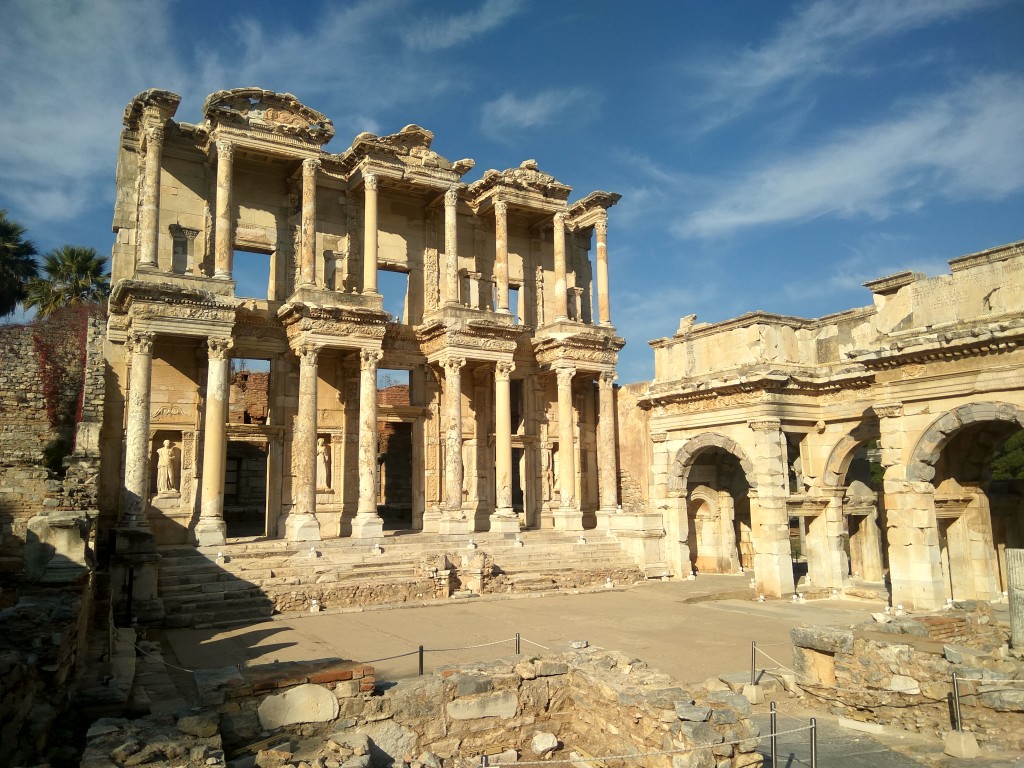
Ephesus Celsus Library

Perge Archeological Site

Pamukkale Necropolis

Stadiums, basilicas, baths, and theatres are to be found in most of them. Huge areas, with a lot of open space, long column roads and immense remains of old buildings really make an impression. Although a lot of these places is only a poor representation of how big it was before, still a lot of areas is well preserved and some major buildings still exist. So, don’t miss them. Choose some of them and indulge yourself in the Ancient Era. Use your imaginary, it really works!
Another interesting place to be visited is an Underground City. The Kaymakli City is an archeological spot located in Anatolia.

This Cappadocia area was at the beginning inhabited by Phrygians, but later became a part of the Roman kingdom.
As the Greek and Roman influence was huge, the culinary area could not be omitted. Those days, their diet was relatively complex. Of course, we are talking about people from the higher level of the hierarchy, but still, their menu was rich in different ingredients and flavors. Also, those from the lower social level had access to some healthy and satiating foods like olives and beans. (Read more about olives: Super tasty olives and Egyptian pickles)
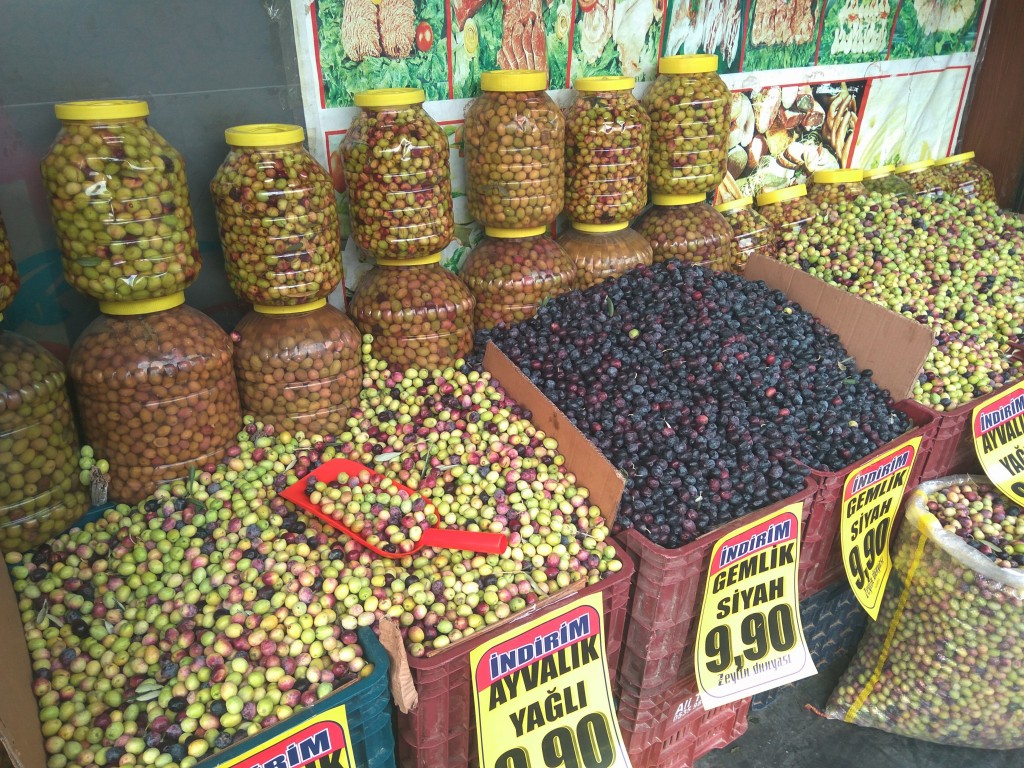
Olives played an important role. Not only were they eaten after being processed, but also were used for producing oil. Olives like Trilya, Kalamata, or Ayvalık are still widely available. Then come regular black and green cocktail olives, extra large size green olives, grilled ones and naturally colored olives. Apart from that, there is a wide selection of different olive types depending on their saltiness.

Tirilye or Gemlik olives are cultivated in the Northern part of Turkey, in Zeytinbağı area. This variety is of a medium size, black and has a wrinkled skin. It contains a lot of oil and it is easy to separate the pit from the flesh.
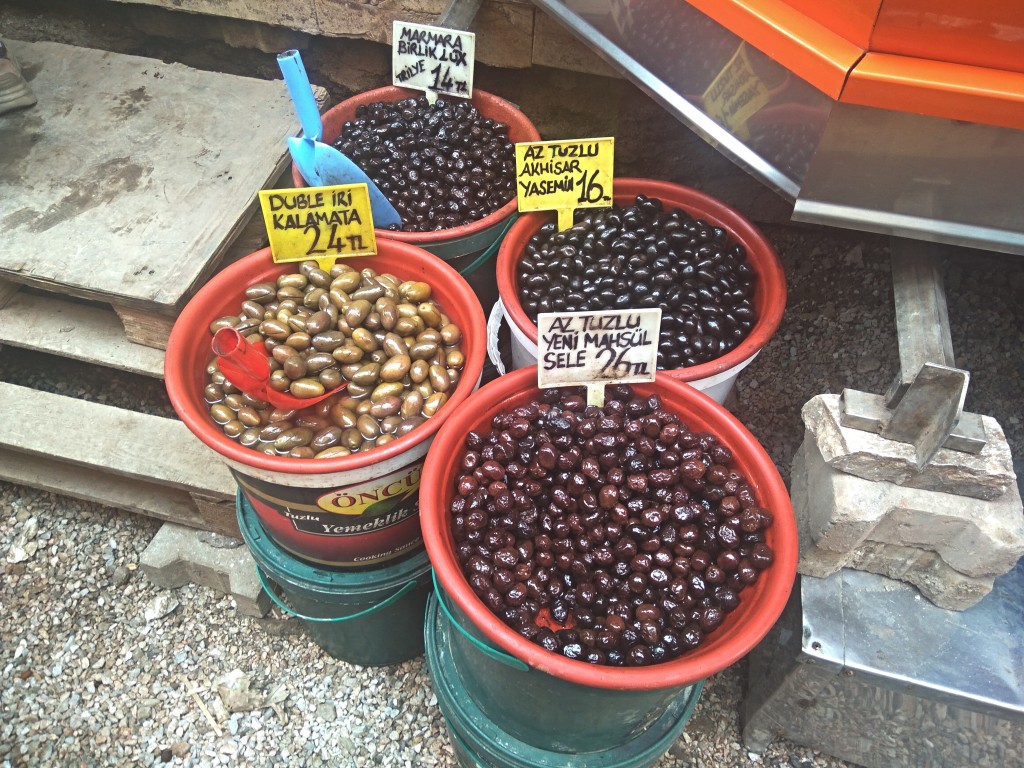
Cocktail olives are regular, smaller-size olives that are mainly used for preparing stews and other dishes. Rarer, they are eaten alone. Kalamata olives are large. Their color is dark purple. The flesh is delicate and smooth. Then, for example, Ayvalık olives are ideal for preparing olive oil, that has an intensive taste and have a high nutrition value.

Then comes cheese. Goat, cow, or sheep’s cheese is very popular in Turkey also nowadays. White, yellow, blue, matured or fresh, crumbled or grated, and a lot of other types of cheese are to be found easily. You can buy it not only in bigger shops like supermarkets, but also in a lot of smaller, local shops and on the food market.
Cheese is used for fillings, baking and eaten alone. Is commonly served as a starter or is used in mezze.
The most popular is beyaz peynir. It is a white cheese and the most common in Turkey. It is the one that is eaten for the breakfast, used for the filling in pastries, included in salads and grilled or baked dishes like different börek pastries or in pide. Apart from that, sometimes it comes in starters. It is served with cucumbers, olives and tomatoes. It can be produced from a cow, goat, or sheep’s milk, and although it is produced all over the country, the one that is known to be the best one comes from the Marmara Sea area. This cheese has a strong flavor, is creamy and rich in intensive notes. It can be either hard or soft. The best place to buy it, is a local farmers’ market where you will be sure to get it fresh and natural.

Another very popular cheese in Turkey is tulum. Tulum is a white cheese that can have a different taste from region to region. The most famous and popular Tulum originates from Izmir and Bergama. Tulum is a soft and pungent cheese produced from goat’s milk. It is crumbly and typically served as a starter or an appetizer with walnuts, butter, and flatbread. Both Bergama and Izmir Tulum cheese has a stronger consistency and flavor, due to the fact, that the cheese is stored in salted water. Tulum is a mature goat cheese. It is moist and has a creamy consistency. The flavors’ richness and notes that can be distinguished in it, vary locally. That is caused by the difference in goats’ menu. Endemic herbs and plants influence the taste of the milk used for the production and in consequence, influence tulum’s taste.
Staying with crumbly cheeses, Lor is worth mentioning. It is a low-salt white cheese used both for eating alone and baking. It might be eaten for a breakfast or as a mezze after mixing with herbs and spices. As it is only slightly salty, it is often used in pastries and desserts.
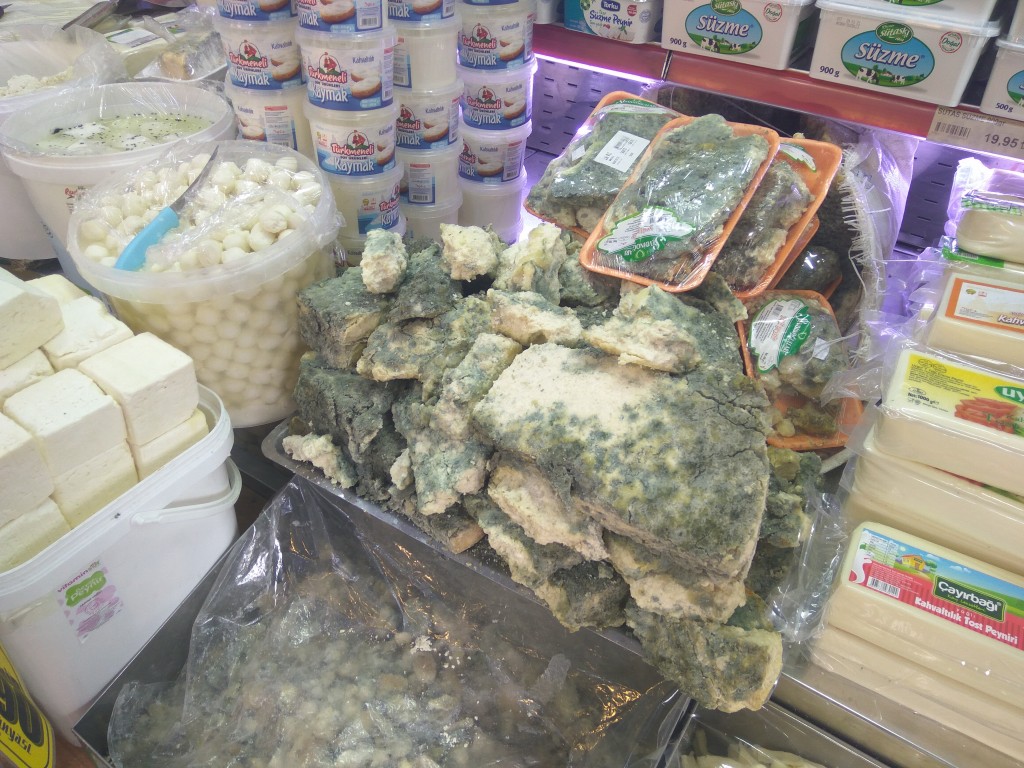
Changing the type of the cheese, for all those that like blue cheeses, Küflü Peynir is an answer. Küflü is prepared from a low-fat milk. Is high in proteins and nutritional values like for example calcium that plays a significant role in keeping bones and tooth in good health. Other studies show that Küflü Peynir protects against cardiovascular diseases and also increases good cholesterol level – HDL. The only thing is, that as Küflü is a moldy cheese, it should be eaten responsibly. As a safe daily portion, 30 grams of such a cheese is allowed. It is important, to store it in a proper way and be sure that the inner mold should neither be beige nor black. Moldy cheeses should also be consumed with moderation and carefully, by all these people that have health problems, have an allergy to penicillin, are during the chemotherapy or are pregnant woman. People with blood pressure and kidney issues should also avoid consumption Küflü Peynir.

Another regional cheese is Kashar cheese. Fresh or aged comes from the city Kars located in the northeastern part of Turkey. This only cow’s milk or cow and goat’s milk cheese is a very popular and liked. It is used for baking, grilling, or as a starter. Served in slices or grated take part in a breakfast or is added during the coking process. Very often, it is used as a topping. There are two types of the Kashar cheese. One of them is a fresh one, the second one is aged. Fresh Kashar cheese has a light-yellow color. It is smooth and firm. The second one – aged Kashar cheese, has a strong aroma and a rich flavor. The outside part of it, has a quite tough crust and a little mold. The inner part is relatively dry and after cutting, separates into flakes. Kashar cheese is mostly eaten for a breakfast or added grated to salads, pide or grilled sandwiches.

Then Ancient people’s diet consisted also of different fruits like pomegranate, plums, apples, and grapes. Vegetables and beans also created a significant part in their menu. Fava beans, chickpea, zucchini, grains, and eggs were eaten as often as possible. Rarer meat and fish were consumed, but still played and important role in their life. Marinated, boiled, in stews were served with sauces and accompanied by wine.
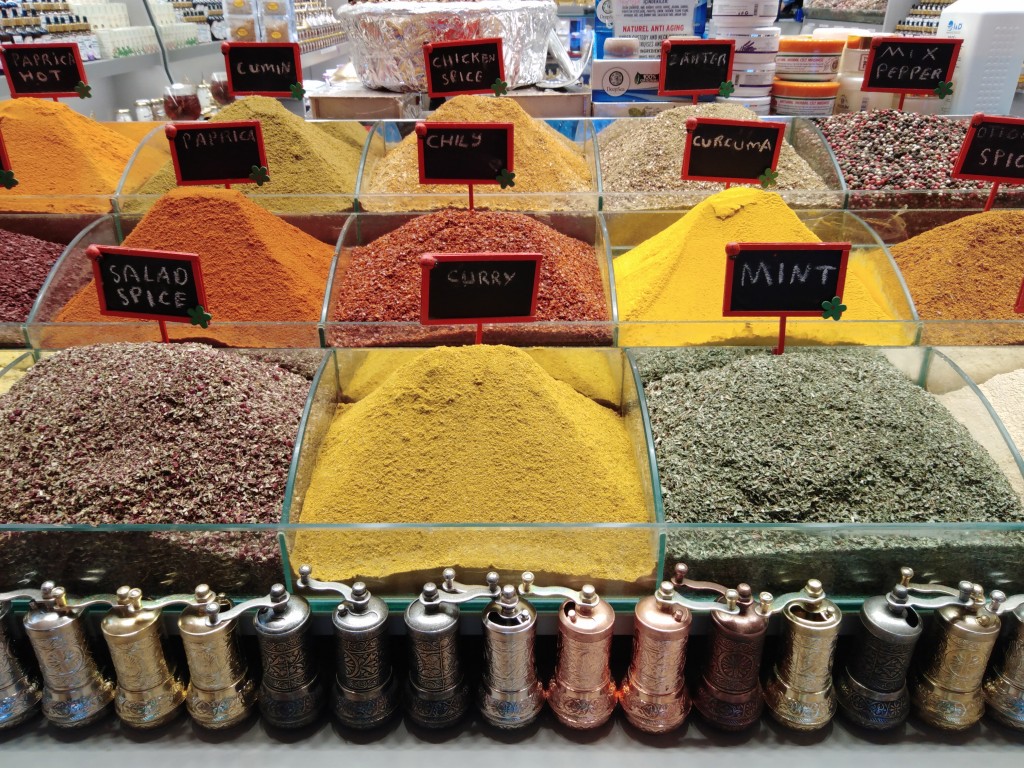
Additionally, come aromatic herbs, spices (Read more about other spices: Powerful Egyptian spices), and olive oil produced from previously mentioned local olives. Eaten with bread or added to all kinds of meals, were believed to have a positive medical influence on the health condition. Their function included accelerating digestion, having anti-inflammatory effect, strengthening immune and cardio-vascular system. They were also used for food preserving and in marinates.

Finally, honey, dried fruits (Read more about dried fruits in Turkey and other countries: The great world of Turkish dried fruits and Freshly picked and dried on the sun, stuffed dates, apricots and figs...), nuts and seeds cannot be omitted. Rich in nutrients, natural, energetic, and healthy were eaten on a daily basis. The most popular were nuts like walnuts, almonds, pistachio, chestnuts, and hazelnuts. While nuts were eaten either alone or processed in stews and cooked dishes, sesame seeds and pine nuts, were mainly used as condiments.
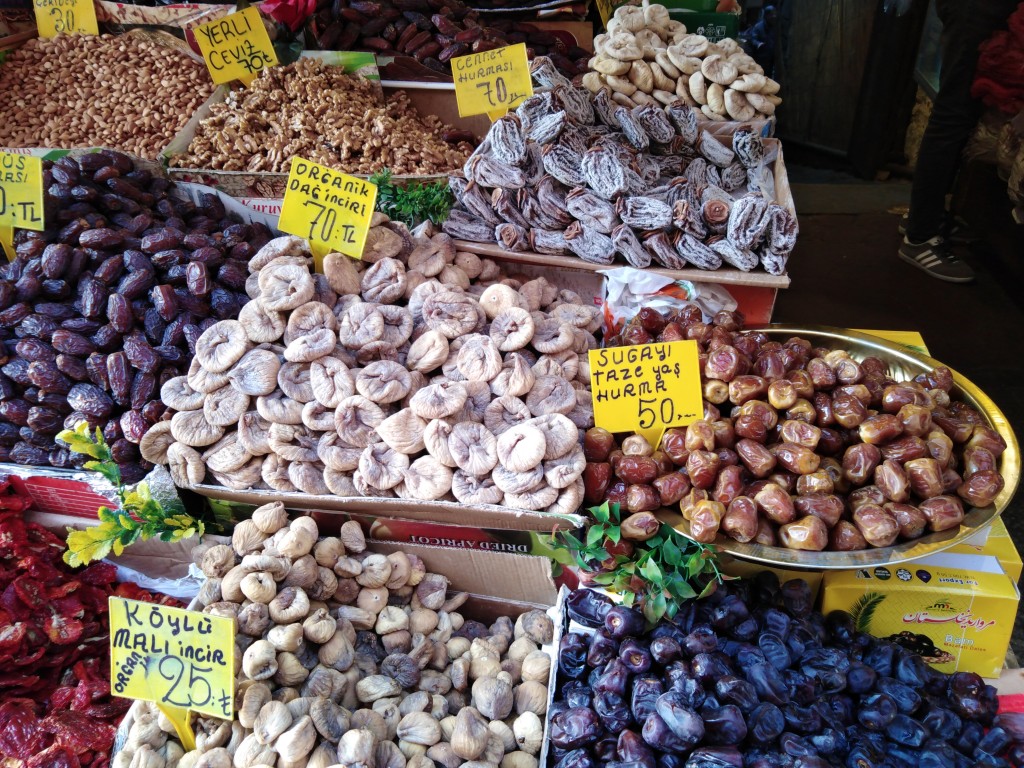
Nowadays all these foods are the most popular ones consumed by Turkish people. Cheese, olives, honey, and nuts create a significant part in their everyday diet. Apart from the fact that they are extremely tasty, they are also extra healthy and provide you with a lot of nutrients. So, start from today and include them in your diet too!
If you are curious about other traditional Turkish dishes read posts on Culinary MUST - Traditional Turkish Testi Kebab (Pottery, Clay or Terracotta Kebab) and TOP 12 traditional Turkish dishes.
Date: 2020-12-08
Author: Beti – A passionate traveler and lover of Asian cuisine, especially Thai and Japanese dishes, Bernadeta brings her culinary and cultural experiences to life in her writing. Beyond her travels, she’s an avid technology enthusiast with a deep interest in data processing, merging her love for exploration with analytical insights.
Photographer: Adalbert – An aficionado of computers and photography, Adalbert captures the essence of diverse cuisines with a discerning eye. A connoisseur of rich flavors and particularly fond of meat-based dishes, he combines his technical skills with his passion for the culinary arts in every shot.









